How to prepare your house for winter
As winter approaches, experts advise that preventative measures are crucial for our houses to weather hard winters

Every year it pays off to make sure your house is ready for winter. Jonathan Foyle, (Climbing Great Buildings, The One Show, Time Team) is on hand to give some timely advice.
As Chief Executive of the World Monuments Fund, Jonathan is very aware of the importance of maintenance. He explains: "Our culture of throw-away convenience has made maintenance a dirty word. It shouldn't be! Maintenance enables us to take our own preventative and remedial action. Repair encourages owners to make a gentle, hands-on contribution to their buildings with the glow of satisfaction at having added a complementary layer to their history. I repair and repaint my own windows, and enjoy the feeling of having understood better, and properly looked after, the house that shelters my family."
Crucially, after the snow, ice and sub-zero temperatures of last winter that ‘preventative and remedial action' might be more vital then ever as the legacy of those freezing conditions could be lurking damage including cracked pipes and fractured water courses.
If, as some forecasters suggest, Britain is about to face yet another bitter winter, it really is time to make a serious inspection. National Maintenance Week aims to give homeowners easy-to-follow pointers on what to look for when checking the external condition of their property before winter bites. (See Jonathan's top tips below)
Really, it's common sense stuff.
Loose or missing tiles, for example, may allow rain water to penetrate loft spaces leading to dampness and even cases of rot. Left too long these can become major problems that are expensive, intrusive and time consuming to fix.
Something as simple as standing outside and inspecting a roof with a pair of binoculars can help people to spot potential problems - and at ground level tile debris and broken shards can be tell-tale signs of problem areas allowing rain to enter and cause rot.
Sign up for the Country Life Newsletter
Exquisite houses, the beauty of Nature, and how to get the most from your life, straight to your inbox.
* Subscribe to Country Life; Country Life Digital Edition
In the same way, it's a good idea to check the condition of ground level drains around a building. If these are clogged with leaves, debris or weeds the resulting blockage of water flow could be the source of problems including damp and, in worse case scenarios, even subsidence!
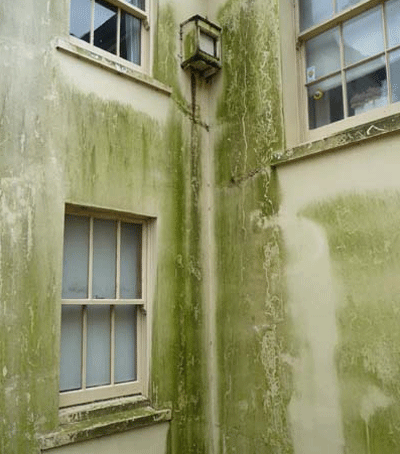
SPAB's annual maintenance drive is very much in line with the principles of the charity's founder William Morris. In 1877 when SPAB was born, Morris spoke of the need to "stave off decay by daily care, to prop a perilous wall or mend a leaky roof." He saw that the best way to preserve and conserve the integrity of an old building was to ensure that it was protected against the worst that time and the elements could throw at it.
Maintenance is important to buildings of all ages and types and is as vital today as it was in Morris's time. Whatever its age, if a building is neglected it will decay and fail, possibly to the point where it may even have to be demolished and replaced.
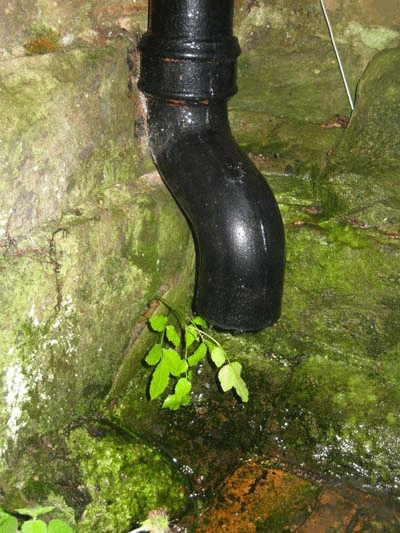
Maintenance makes economic sense too. A well-cared for building will almost always retain maximum value and the cost of regular maintenance will more than repay itself whether or not you sell your property. A small regular investment in maintenance can limit the need for or the extent of expensive repairs. The annual cleaning of gutters and drains, for example, can be much cheaper and less inconvenient than having to cope with a serious outbreak of dry rot in the timbers of your roof caused by years of neglect.
Jonathan Foyle's top tips for simple maintenance:
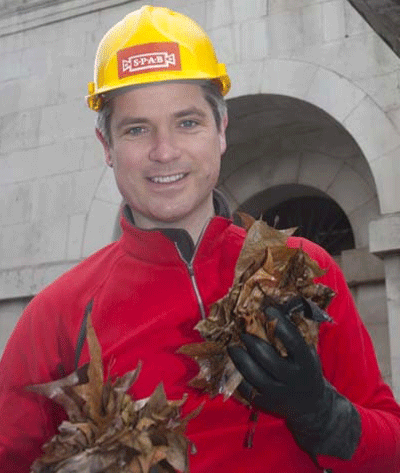
* Every spring and autumn, clear any plants, leaves and silt from gutters, hopperheads, flat roofs and drainage channels
* Look for blocked downpipes (best done during heavy rain to see water coming from any leaky joints - in dry weather look for stained brickwork)
* Fit bird / leaf guards to the tops of soil pipes and rainwater outlets to prevent blockages.
* Check that gutters junctions are watertight by watching them in rainy conditions
* Have gutters re-fixed if they are sloping the wrong way or discharging water onto the wall
* Use a hand mirror to look behind rainwater pipes as splits and cracks in old cast iron and aluminium often occur there and are not easily noticed
* If sections are beyond repair, make sure that replacements are made of the same material as the originals (on older houses, this is sometimes lead, but more usually cast iron)
* Regular painting of cast iron is essential to prevent rust
* Keep gullies at ground level clear and have them cleaned out if necessary
* Remove vegetation from behind downpipes by cutting back or removing the plant altogether
Always wear protective gloves when necessary and act safely and responsibly Property Care in a Cold Climate - SPAB advises:
* Localised flooding through winter pipe bursts can be avoided by the use of proper lagging (particularly outside or in unheated areas). It is also advisable to add anti-freeze chemical to your central heating system or fit a frost thermostat to turn on the boiler whenever the air temperature falls below a minimum level.
* If you are going to be away from home for a couple of days, programme the central heating system to run continuously at a low level (about 5ºC). Additionally, open your loft hatch fully to keep the roof space above freezing point.
* If you are away for more than a few days and wish to turn the heating off, drain the hot and cold water system. You do not need to drain the central heating system, though, as long as it has been treated with anti-freeze.
* Snow should be cleared from parapet and valley gutters with wooden or plastic shovels to prevent moisture seeping through joints (minding your own safety). Alternatively, duckboards or electric heating tapes can be provided to keep gutters clear of snow.
* Be sure to keep gutters and downpipes free from leaves, moss and other material that can cause blockages. Water may otherwise fracture pipes if it freezes in them or cause accelerated deterioration of saturated wall faces in frosty conditions where gutters spill over.
* Ensure that salt is not spread onto the bottoms of walls when paths and roads alongside are gritted. Salt contamination can hasten significantly the decay of mortar joints, brick or stone.
* Consider moving inside statues and other garden ornaments that may be vulnerable to frost attack. Where this is not viable, some form of temporary covering might be used.
* Be vigilant as snow starts to thaw. Ice at the edges of roof slopes, for example, may prevent melting snow from draining away, causing it to back up and leak into the attic. If you attempt to remove the ice, be careful of your safety and avoid damaging the roof. * Wipe windows every morning where overnight condensation has formed to prevent moisture damage to paint finishes, and timber or metal frames.
* In exceptional cases, heavy frost can affect the load-bearing capacity of the soil beneath a building and cause its partial subsidence. Where the stability of a structure is in doubt, the SPAB may be able to suggest the names of suitably experienced structural engineers who could be contacted.
Find out more about SPAB's annual National Maintenance Week (November 18 - 25th) by visiting www.maintainyourbuilding.org.uk which offers practical and straightforward advice on maintenance and repairs to everyone who looks after a property.

You can find out more about the work of SPAB, WMF and other heritage organisations on ProjectBook which provides a wide range of information for the conservation, restoration, care and repair of period and listed buildings. Updated daily, the website features the Heritage Register where you can find building conservation professionals, a products directory, informative articles, current news, events and more. For more information, visit www.projectbook.co.uk
Country Life is unlike any other magazine: the only glossy weekly on the newsstand and the only magazine that has been guest-edited by HRH The King not once, but twice. It is a celebration of modern rural life and all its diverse joys and pleasures — that was first published in Queen Victoria's Diamond Jubilee year. Our eclectic mixture of witty and informative content — from the most up-to-date property news and commentary and a coveted glimpse inside some of the UK's best houses and gardens, to gardening, the arts and interior design, written by experts in their field — still cannot be found in print or online, anywhere else.
-
 In all its glory: One of Britain’s most striking moth species could be making a comeback
In all its glory: One of Britain’s most striking moth species could be making a comebackThe Kentish glory moth has been absent from England and Wales for around 50 years.
By Jack Watkins Published
-
 Could Gruber's Antiques from Paddington 2 be your new Notting Hill home?
Could Gruber's Antiques from Paddington 2 be your new Notting Hill home?It was the home of Mr Gruber and his antiques in the film, but in the real world, Alice's Antiques could be yours.
By James Fisher Published
-
 Ten house tips for the winter
Ten house tips for the winterNow is the time to put your house in ship-shape for the winter months ahead. Chartered surveyor Tom Grillo shares his ten top tips
By Country Life Published
-
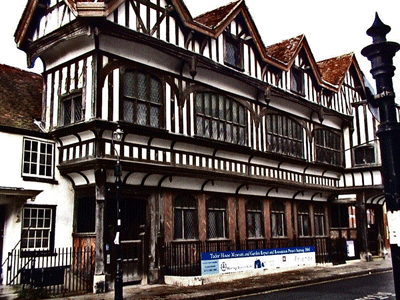 Choosing an interior designer
Choosing an interior designerFinding the right skilled interior designer for your period property requires some dedication; in particular you need to make sure you share the same vision
By Country Life Published
-
Maintenance tips for Victorian houses
There are a number of aspects to look out for when viewing or indeed owning a Victorian house
By Country Life Published
-
 Best cooking pans
Best cooking pansMrs Danvers suggests the best makes of pots and cooking pans to hunt down when shopping for a special friend's wedding present
By Country Life Published
-
How to save old floorboards
Lots of care and elbow grease can help old floorboards gleam again
By Country Life Published
-
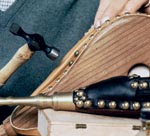 Buying bellows
Buying bellowsMrs Danvers recommends where to find a new or antique pair of bellows
By Country Life Published
-
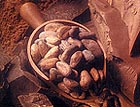 Removing chocolate stains
Removing chocolate stainsMrs Danvers tackles readers' household queries: this week's are chocolate stains on a linen suit and screen doors
By Country Life Published
-
 Tips on hosting parties
Tips on hosting partiesMrs Danvers comes to the rescue of two readers who have parties looming and need advice on arranging transport and hiring cutlery
By Country Life Published
